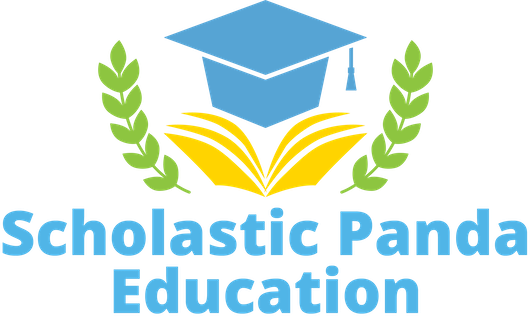Dive into the enchanting world of reading instruction, a realm where each lesson unfolds like a chapter in a captivating storybook. Our classroom is a dynamic stage, each child a unique character in this ever-evolving narrative. Guided by the insights of Dr. Sharon Walpole, we weave together the vibrant threads of whole and small group techniques, crafting a rich, multifaceted tapestry of learning. Embark with us on this transformative journey, where every word, every lesson becomes a stepping stone to discovery and delight.
1. The Whole Group Wonderland: A Classroom Carnival
The Magic of Togetherness: Envision our classroom transforming into a lively carnival, brimming with the excitement of collective learning. Dr. Walpole’s methods underscore the importance of creating a shared foundational experience, akin to gathering around a warm campfire for storytime.
In Mrs. Thompson’s kindergarten class, the alphabet isn’t just a series of letters; it’s a parade of characters, each with its own story and personality. On ‘A’ day, the room buzzes with activities about apples and astronauts. Children wear ‘A’-themed hats and share words starting with ‘A’. This festive approach turns learning into a joyful, communal celebration.
Put It In Action:
- Thematic Days: Dedicate each day to a different letter or concept. Encourage students to bring items or wear clothing related to the day’s theme.
- Interactive Storytelling: Use storybooks that align with the day’s theme. Make storytelling interactive by using props, costumes, and student participation.
- Group Activities: Organize group activities that involve everyone, like creating a giant letter collage or a class mural.
- Celebrate Learning: End each day with a mini-celebration or show-and-tell, allowing students to share what they learned or created.
2. Small Group Spectacular: The Treasure Hunt of Learning
Customized Quests: Small group instruction in Mr. Lee’s third-grade class is an exhilarating adventure, much like a treasure hunt. Each group sets off on a quest, tailored to their unique learning needs. They delve into the world of phonics, with puzzles and challenges crafted to match their specific reading levels. This approach turns learning into a captivating and personalized journey.
Classroom Story: One group, the “Pirate Puzzlers,” focuses on vowel sounds. Their treasure map leads them through various phonics activities, from decoding words to constructing sentences. Each successfully completed task brings them closer to their treasure: a chest filled with books tailored to their reading level.
Put It In Action:
- Create Learning Stations: Set up different stations in the classroom, each with a unique set of phonics-related activities.
- Use Interactive Puzzles: Incorporate puzzles and games that align with the learning objectives of each group.
- Encourage Peer Collaboration: Have students work in pairs or small teams to solve problems, fostering teamwork and communication.
- Track Progress: Use a progress chart or map to visually track each group’s journey, adding an element of excitement and accomplishment.
As Mr. Lee’s class demonstrates, small group instruction can be a thrilling and effective way to cater to individual learning styles. This approach not only enhances phonetic skills but also encourages a love for reading and collaboration among students.
3. The Balancing Act: Juggling Whole and Small Group Dynamics
Juggling Skills: In Ms. Garcia’s fourth-grade classroom, the art of blending whole and small group instruction is like an educational juggling act. It requires finesse and mindfulness to keep the learning experience dynamic and inclusive for every student.
Classroom Story: Ms. Garcia introduces the concept of story elements in a whole group setting, engaging the class in a lively discussion about character development and plot structure. Then, the class transitions into small groups, each tasked with creating their own short stories. One group, “The Creative Composers,” dives into crafting a mystery tale, while “The Sci-Fi Squad” focuses on a futuristic adventure.
Put It In Action:
- Group Brainstorming: Start with a whole group brainstorming session to gather ideas and spark creativity.
- Diverse Group Assignments: Assign different genres or themes to each small group to encourage diversity in storytelling.
- Peer Review Circles: Have students share their stories within their groups for feedback, fostering a supportive and collaborative environment.
- Story Showcases: Conclude the activity with a class-wide story showcase, where each group presents their story, celebrating their collective creativity and effort.
Ms. Garcia’s approach not only reinforces understanding of story elements but also cultivates creativity, teamwork, and communication skills, making the learning process both comprehensive and enjoyable.
4. The Ensemble of Engagement: Orchestrating a Reading Symphony
Conducting the Orchestra: In Mr. Patel’s fifth-grade class, the harmony of whole group and small group instruction is akin to conducting a symphony. Whole group discussions set the foundational rhythm, while small group sessions allow individual melodies to flourish. This blend of teaching styles ensures each child’s learning style is nurtured and respected.
Classroom Story: During their study of historical figures, Mr. Patel’s class engages in a lively whole group discussion about Martin Luther King Jr. Students share thoughts on his impact, setting a collective understanding. Then, they break into small groups, each researching a different aspect of King’s life and work, such as his speeches, marches, or books. This approach allows students to dive deeper into topics that pique their individual interests, fostering a rich learning experience.
Put It In Action:
- Incorporate Role-Playing: Use role-playing or simulations during whole group discussions to bring historical figures to life.
- Assign Diverse Projects: For small groups, assign different research topics or aspects of a subject for in-depth exploration.
- Encourage Presentation Skills: Have each group present their findings to the class, promoting public speaking and collaborative learning.
- Use Technology: Integrate multimedia resources like videos or interactive websites to enhance research and presentations.
As we close the book on this journey through the magical realms of reading instruction, we reflect on the rich tapestry we’ve woven together. From Mrs. Thompson’s alphabet carnival to Mr. Patel’s symphonic blend of discussion and research, we’ve seen how learning can be both joyous and profound. This journey isn’t just about teaching reading; it’s about kindling a lifelong passion for learning, about nurturing each child’s unique voice in the grand narrative of education. Let us carry forward these vibrant lessons, continuing to shape a world where every child’s learning story is heard and celebrated.




